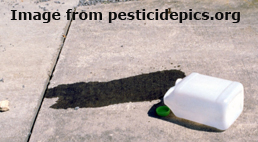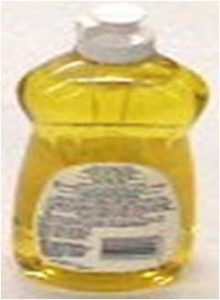Accidents happen, and when they do you must be prepared to clean up and properly dispose of any contaminated materials.
If a spill occurs:
- Clean up spills immediately to protect yourself and others in the area.
- Do not put yourself at unnecessary risk; wear the appropriate personal protective equipment (PPE) whenever handling pesticides.
- Some product labels provide specific guidelines on how to handle a spill, so prepare yourself to handle a spill before it takes place.
The following items should be on location and easily accessible in the event of a spill: protective eyewear; rubber gloves; rubber or plastic foot coverings; dry absorbent material, such as cat litter, soil, newspapers, or paper towels.
Always keep the product emergency phone numbers and local emergency phone numbers programmed into your cell phone or written down near the phone and large enough to read in the event of impaired vision.
If a pesticide spill occurs, remember the three C’s: Control, Contain, and Clean Up.
Control the Spill
 Always put on protective equipment before handling a pesticide spill.
Always put on protective equipment before handling a pesticide spill.- Stop the spill or leak immediately. If a container, bag, sprayer, or spreader turns over, return it to an upright position. If a small container is leaking, place the container directly into a larger chemical resistant container to stop further release.
- Isolate the spill and prevent unprotected people, children, and animals from entering the area. If you or someone else is in danger, call 911.
 Contain the Spill
Contain the Spill
- Do everything possible to prevent the spill from spreading and to contain the material in as small an area as possible.
- For liquid spills you may be able to create a dike of soil, sod, or an absorbent material to contain liquid spills. Quickly cover liquid spills with an absorbent material, such as cat litter, newspaper, or paper towels. Keep adding the absorbent until all the liquid is soaked up.
 Contain dry pesticides, such as dusts, powders, or granules, by lightly misting with water or covering with a sheet of plastic. Be careful not to over moisten and cause clumping or release of the pesticide action.
Contain dry pesticides, such as dusts, powders, or granules, by lightly misting with water or covering with a sheet of plastic. Be careful not to over moisten and cause clumping or release of the pesticide action.
Clean Up the Spill Immediately
 Never wash spilled pesticides away with a hose, and never wash pesticides down storm or sewer drains. Always prevent pesticides from entering any body of water or pathway that may lead to a body of water.
Never wash spilled pesticides away with a hose, and never wash pesticides down storm or sewer drains. Always prevent pesticides from entering any body of water or pathway that may lead to a body of water.
- Once liquid spills have been absorbed, sweep up or collect the contaminated absorbent materials, and seal them in a heavy-duty plastic bag for disposal.
- Sweep up dry pesticide spills for reuse. It may be applied to a labeled-use site, or stored for future use if the pesticide has not become wet or contaminated with soil or other debris. Otherwise, collect the dry spill in a heavy-duty plastic bag for disposal.
- Dispose of pesticide contaminated materials in the garbage outdoors, not in the home.
- Use diluted bleach or detergent to clean the contaminated area.
- Read the pesticide label and see “Pesticide and Container Disposal” for information on disposing of any excess pesticides.
- Clean all equipment thoroughly.
- Wash your hands, forearms, face, neck and any other parts that may have been exposed, with soap and water. Shower if necessary.
For additional information on how to handle pesticide spills:
- How to Handle Chemical Spills. 2016. Penn State University. Pesticide safety fact sheets, Consumer topics, Applicator topics and West Nile Virus fact sheets provided by Penn State to help with pesticide education
Compiled by Wayne Buhler, PhD.
